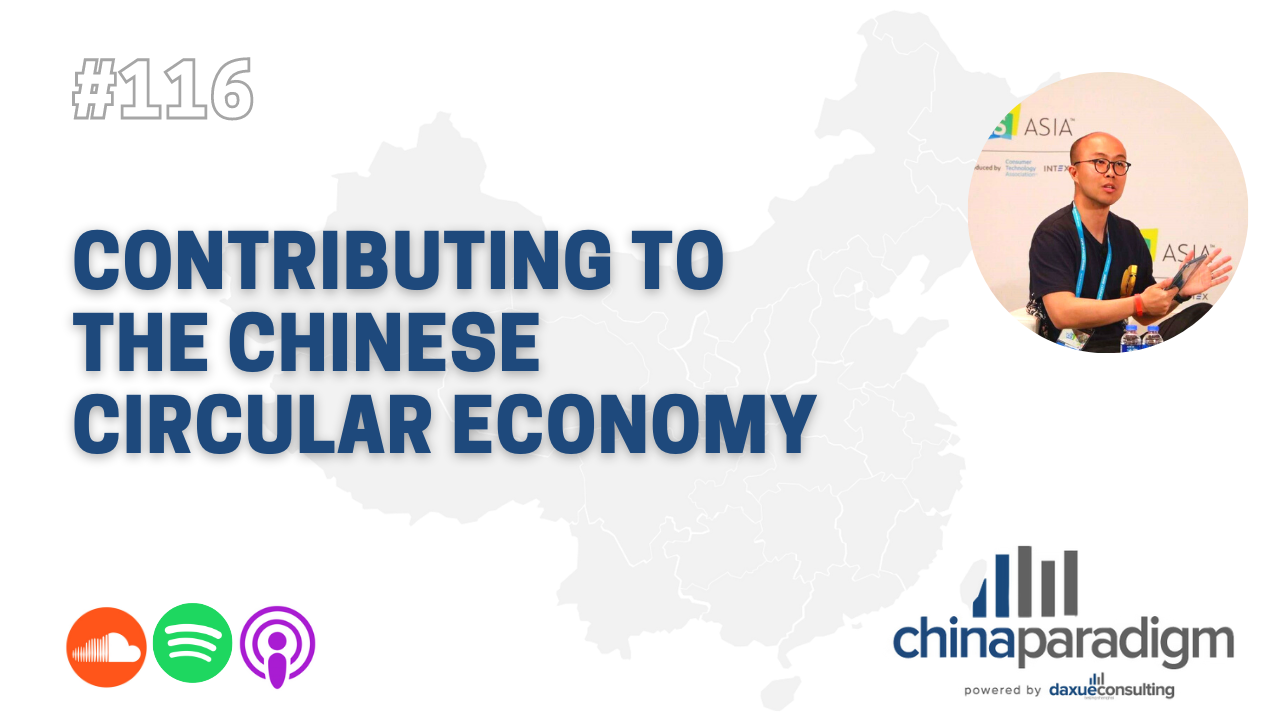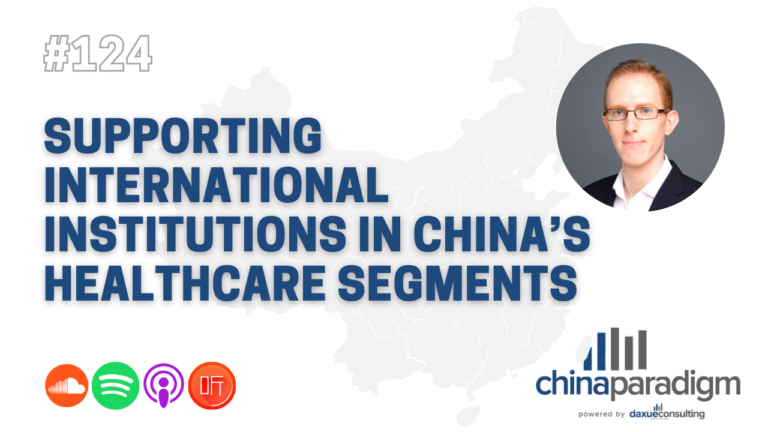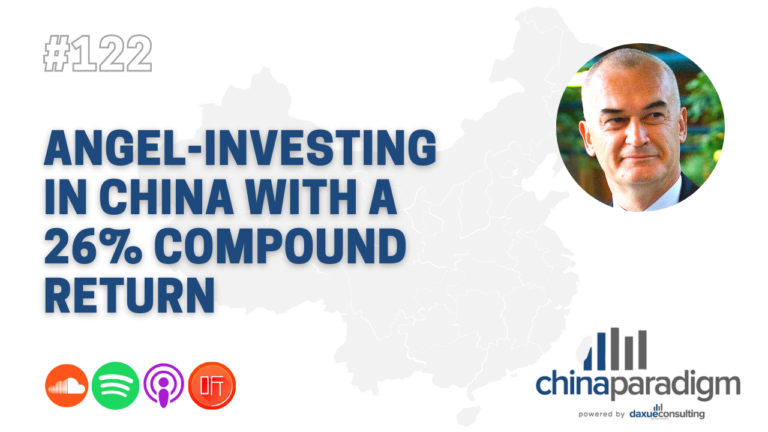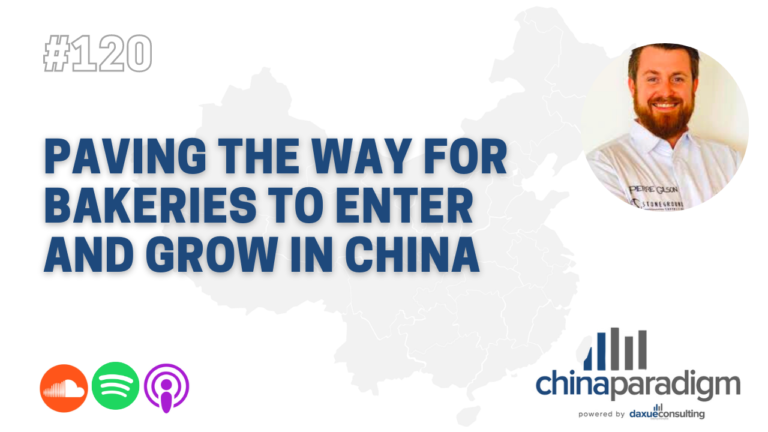Vincent Djen is the managing director of Cheng Kung Garments, a medium-sized player in the garment and textile industry in China. His parents founded the company in 1975 in Hong Kong. They had a background in electronic engineering, but the boom in the garments industry in China caused them to open a factory. Vincent took over the running of the factory in 2005 after graduating from university in the US. Their revenue is 10 – 11 million USD per year and they produce about 150,000 to 200,000 garments per year. About 33% of their garments are produced in their own factory and 66% of their garment production is outsourced to other factories in China. They produce garments for GANT, GANNI, and Filippa-K among other well-known international clothing brands. Vincent also advises companies on the eco-friendly production of garments in China.
Listen to the full China Paradigm episode 116 on Youtube, Apple Podcast, Spotify, Soundcloud, or Ximalaya.

How to survive as a garment producer in China
The key to surviving as a garment manufacturer in China is to produce a strong portfolio of products while specializing in one particular product which can be its bread and butter item. Another key is to have a large customer base and to be able to sell to the domestic market in times of low exports. The peak season for Cheng Kung Garments is from late March to July. Having these other facets will help garment manufacturers outride the storm caused by off-season low sales.
“You need to have a strong portfolio and large customer base to ride out low periods. Also, you need to have one product that you are extremely good at producing and one or 2 other products that you are very good at producing. I liken good garments factories in China to Olympic swimmers. They maybe excel in the butterfly category but can also compete for a podium finish in the breaststroke and backstroke categories, too.”
Vincent Djen, managing director of Cheng Kung Garments
What advantages does China have over other countries when it comes to garment production?
Despite recent talk of China losing market share in garment production to neighbors including Vietnam and India, China has a number of advantages over these countries. According to Vincent, one advantage of the garment and textile industry in China is the massive domestic demand. Another is the highly developed nature of its domestic transportation infrastructure. Another is its deep supply chain network, there are factories in China which cover every possible product necessary in the garment industry, from zips to buttons, to textiles and threads. There are a wealth of domestic producers for each of these vital processes. Another advantage is that due to its large size and varying weather, all climatic zones and seasons are covered. This means that China must cater to its domestic winter, autumn, spring, and summer wear market. The ability to specialize in each of these categories from low end to high end means that China is well set up to cater to foreign markets’ demands.
Mechanization in the garment and textile industry in China
One advantage other garment-producing nations have over China is lower wage costs. The key to offsetting this is mechanization. However, this is more difficult in the garments industry because robotic arms are still not as effective as a pair of human arms when it comes to producing items of clothing. Robotic arms find it more difficult to work with soft products. Currently, the price of a machine that can produce garments is around 150,000 RMB. This is too high for most medium-sized factories according to Vincent. The tipping point will be when the price per machine is around 50 to 60,000 RMB, then there will be widespread adoption by factories in China. Vincent estimates this is at least 2 years off being realized but improvements and cost reductions are happening all the time.
Recycling in the garment and textile industry in China
One area that is close to Vincent’s heart is the issue around the sustainable and eco-friendly production of garments in China. Vincent has witnessed how government policies have led to garment factories reducing their water usage by up to 70% in China. The MIC 2025 plan is expected to further reduce waste in the industry. Also, recent policies have forced factories to become more sustainable in production and have offered companies tax incentives to do, while also offering grants to companies that develop sustainable industrial solutions. In his role as a consultant, Vincent advises companies on how they can reduce their waste.
Vincent is also involved in developing methods for turning old fishing nets back into nylon that can be reused in the fashion industry. This is a more difficult process than turning plastic bottles into reusable nylon, but Vincent is dedicated to the eco-friendly production of garments in China. He believes it is a worthy pursuit, both in terms of offsetting the damage caused by the fashion industry and as a trend that is likely to see more and more growth in China and around the world.
Listen to the full China Paradigm episode 116 on Youtube, Apple Podcast, Spotify, Soundcloud, or Ximalaya.










